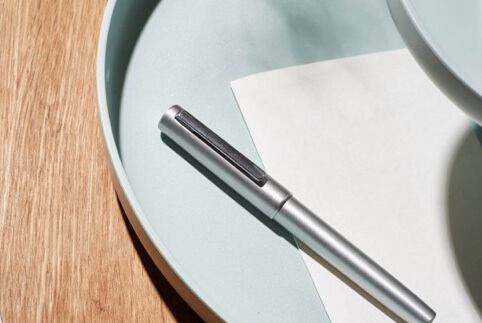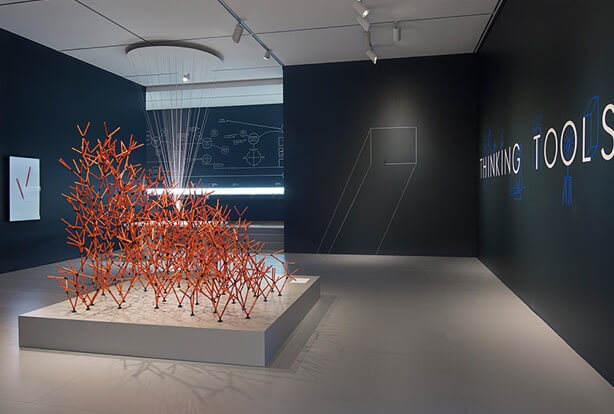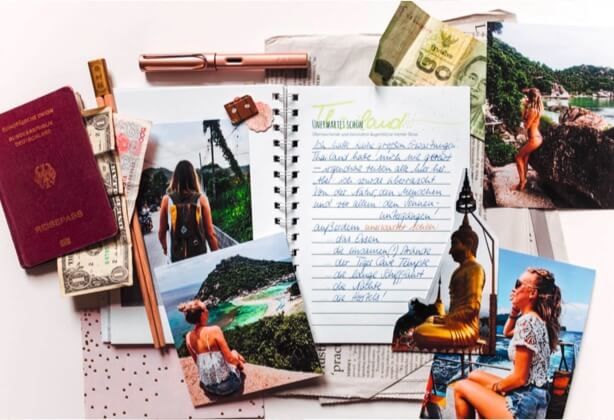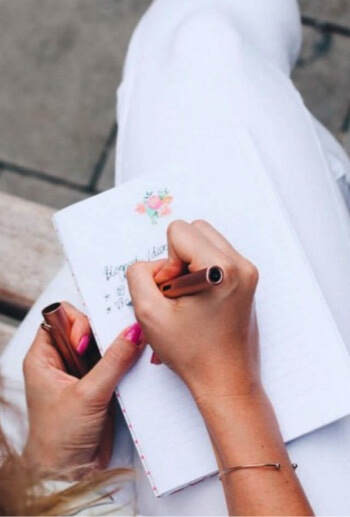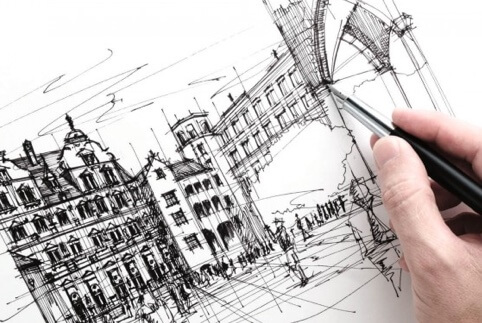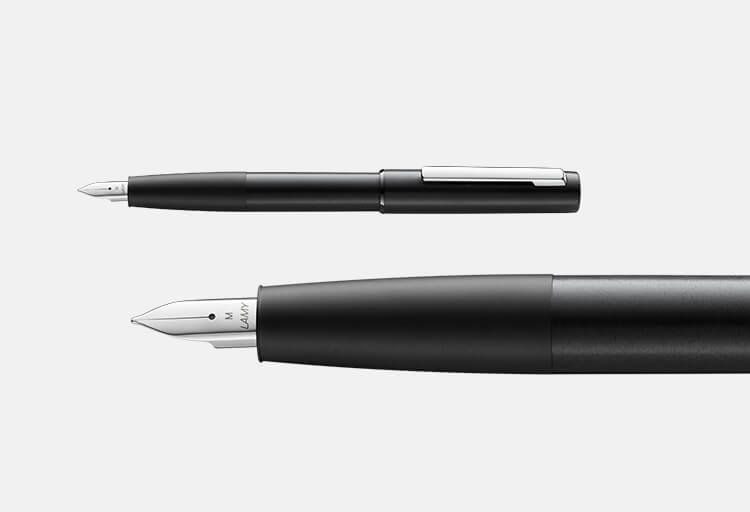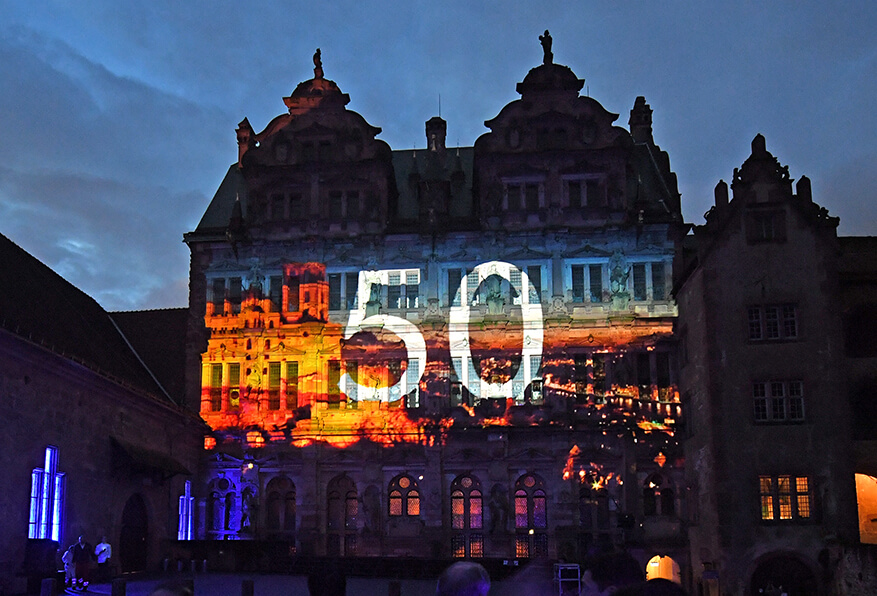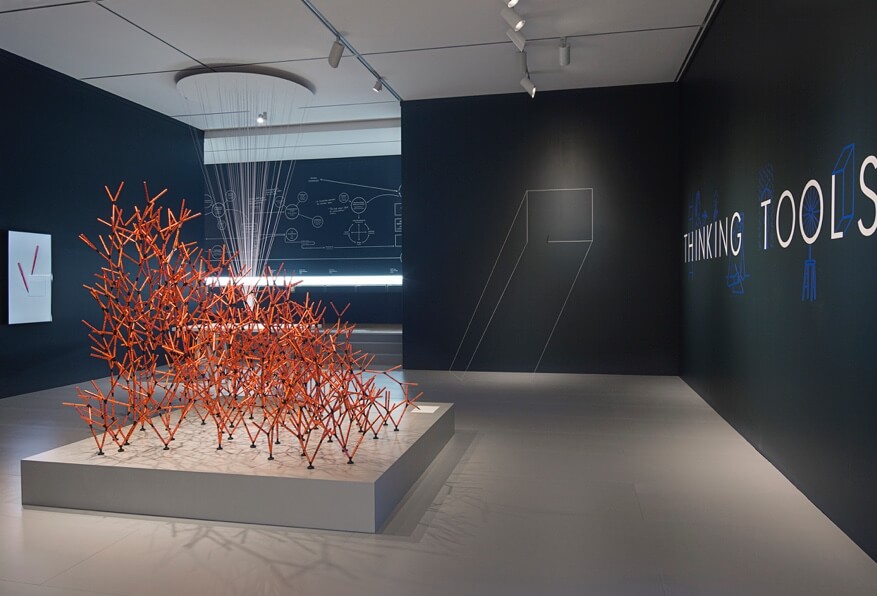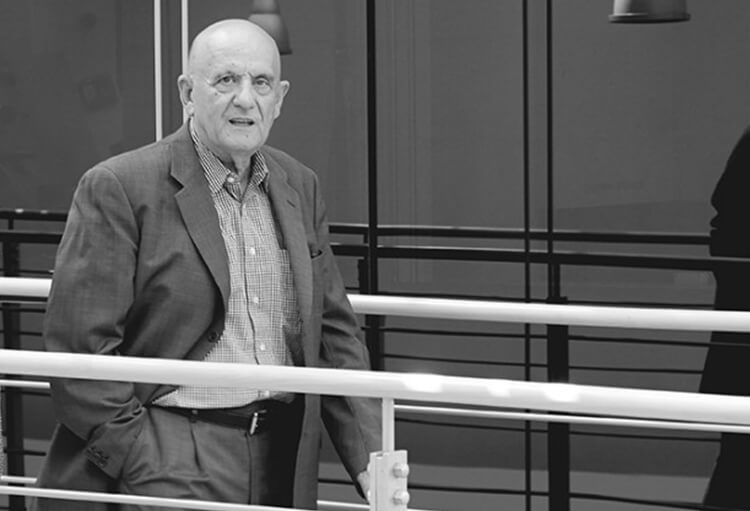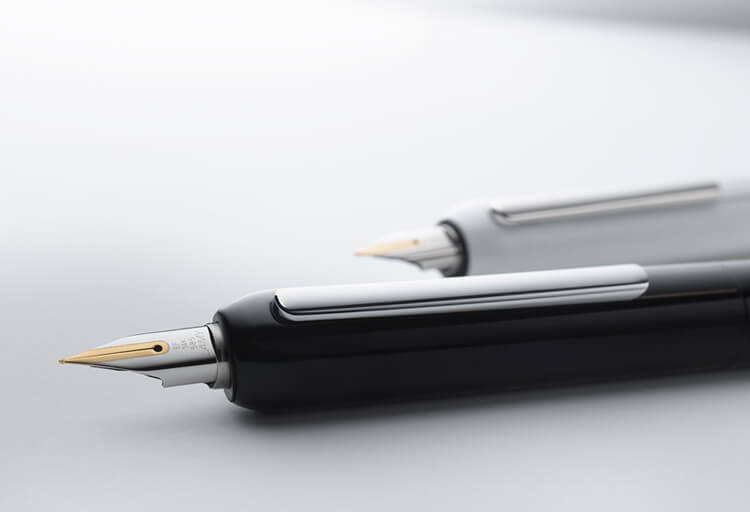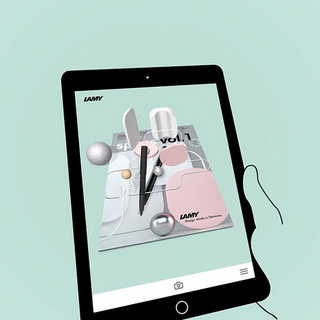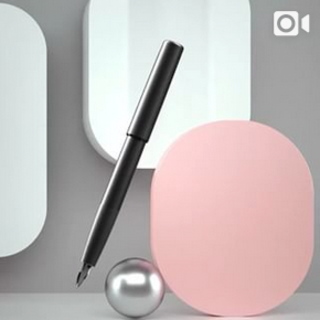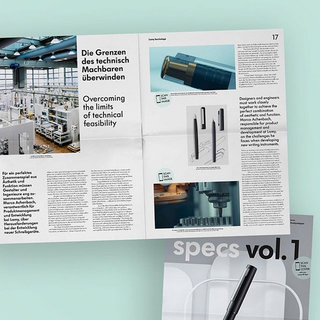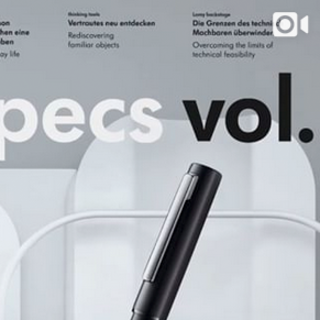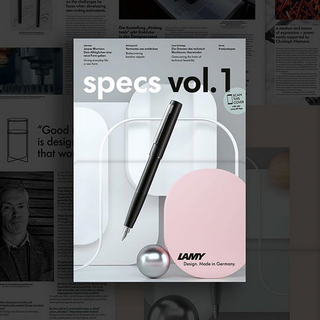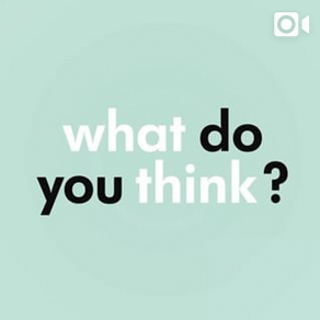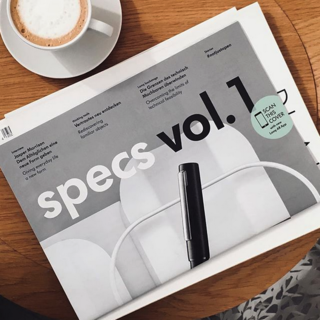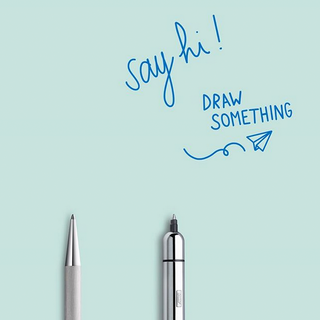Christoph Niemann x Lamy
Christoph Niemann’s great skill is to extract the unfamiliar from the familiar and to discover totally new things in everyday life. He applies light strokes as he effortlessly sketches out his subjects. This is based on an intensive process of devising, seeing, drawing and deciding, giving rise to his surprising ideas.
These may relate to anything from the New York underground to something more obvious – like the items on his desk. He also continues to document his own creative process in his drawings and books. For Lamy, he has looked at the activity of writing itself and the writing instruments they produce. They are very familiar to him. As a schoolboy, he took the three colours of the LAMY safari fountain pen available at that time and made his own unique red, black and white pen.
The illustrator and artist has published his own view of things in the New Yorker, for which he is a regular cover designer, as well as the New York Times Magazine and many large-scale German publications. His works have been presented with numerous awards from the Art Directors Club, Lead Awards and American Institute of Graphic Arts (AIGA). Christoph Niemann is a member of the Art Directors Club Hall Of Fame.
The dedication with which something so everyday is created is symbolic of Lamy for me.
What was your experience of the production processes at the Lamy factory in Heidelberg?
CN: The fascinating thing about my visit to the factory in Heidelberg was that the manufacturing process for these writing instruments can be tracked in the true sense of the word – step-by-step, one step after the other. The basic materials are all processed there: plastic pellets are transformed into fountain pens and steel tubes into barrels or caps, the balls are inserted into the refills of rollerball pens and each individual Lamy cartridge is produced. It reflects an almost childlike perception of how a factory operates. At the same time, it is very futuristic and ultra-modern. I am particularly impressed by how many individual components are actually produced on-site. Even the moulds for the prototypes are made there.
You yourself like sketching complicated and sometimes rather absurd devices. Did you discover anything which is of professional interest to you?
CN: I found it fascinating how the pens are tested to ensure a consistent flow of ink. They are clamped in a machine which makes automatic circular motions and then an endless roll of paper is passed underneath. This creates mechanically drawn, dense spirals. You can detect even the smallest irregularity in the moiré pattern or grid which emerges as a result of the crossing of the lines. These technical drawings which only serve a quality control purpose are actually very beautiful.
A certain poetry in technical forms is also evident in many of your works.
CN: There is another fantastic example of that, the ‘Tumbler 2000’. This device is a rounded metal box to which a net is connected by mechanical arms. This is the equivalent of a handbag, planned by engineers in Switzerland. A mobile phone, purse and fountain pen go inside and then are shaken around for three days. This technically-refined simulation of something as ordinary as a woman’s handbag really fascinates me, it has poetry. The dedication with which something so everyday is created is symbolic of Lamy for me.
At the end of the day, it always boils down to: does an item do exactly what I need?
What relationship do you have with your writing instruments?
CN: Of course, I have a fetish for stationery and I like to buy vast amounts of artist materials – regardless of whether or not I really need them. Comes with the territory! But the writing instruments are first and foremost a tool for me. At the end of the day, it always boils down to: does an item do exactly what I need? Does it always have the same line width, is it consistent and will it be the same in three weeks as it was 2 years ago? I need that reliability.
Can there be any such thing as a favourite writing instrument?
CN: For me, it could be any pen, it doesn’t have to be the fountain pen given to me by my father and handed down from generation to generation. Rather I could take the LAMY safari I have here, or otherwise the one that’s sitting here on my desk – the visual result is always exactly the same. This is something I can rely on. It is a completely different philosophy to being dependent on a ‘lucky pencil’. I need a pen I am familiar with. It mustn’t deteriorate and I always have to be able to buy a new one.
Does your work not relate to chance?
CN: Artistic and creative things are often associated with chance. The curved line, the calligraphic gesture, is always seen as more of an artistic expression than the straight line, which anyone can draw, in principle. But for me, it is more about not making that calligraphic mark which expresses the soul. I draw straight lines which link two familiar things in a new way. This is also the case in the pictures I created for Lamy. The pen, for me, is an extension of the hand.
So you have a kind of physical connection with your writing instrument?
CN: I think there is that moment in any field where you specialise. During the fourth semester, we made a cartoon for which we sketched out thousands of drawings. I had two pencils, a hard 3 or 4H and a soft one, a B. I had to keep looking to see which was the hard one and which the soft one. A few weeks later, I noticed that I could identify them from their different temperatures, without looking. Things become so close to you that they take on a truly physical aspect.
Do you allocate specific working materials to specific ideas?
CN: When I am painting a watercolour, it is all about what the brush is doing. The images for Lamy were less spontaneous and more about devising an essence. You have to slowly feel your way to ideas. You have to first apply something on paper and then rearrange it. So it is not the case that I almost trust the thoughts which spontaneously appear on the paper. Instead a drawing is the result of a slow process of adding and, more importantly, taking away.
You have to first apply something on paper and then rearrange it.
Do you also write your ideas down?
CN: For me, drawing and writing have significant connections. Much more than painting or photography, for example. You write your ideas down and then try to replace the three woolly adjectives with a unique and striking one. Developing an image also has an element of linking vocabulary together. The approach to the final formulation is very similar in writing and in drawing.
So you have a kind of physical connection with your writing instrument?
CN: I truly believe in science there. If someone has identified that writing by hand is important for the brain, then we should write by hand. I myself love writing by hand. But it is always difficult to impose your own preferences on your children. That quickly has the opposite effect! I am always saying to my children that they should take notes because I am convinced that you memorize things better when you write them down. But if someone were to discover that you learn just as quickly through typing, I would still find writing by hand more appealing.
What relationship do you have with your own handwriting?
CN: As a schoolboy, I had one big problem: I had fantastic handwriting but it came in ten completely different versions. And it changed every five lines. From loose and flowery to sloping. And then I suddenly realised just how good extreme descenders below the line look, but I also had to be quick… The results looked terrible, or looked good – but in ten different versions. I always got into trouble over my handwriting.
I always got into trouble over my handwriting.
Do you have an explanation for that?
CN: Impatience, significant creative will, a desire to experiment.
Do you think that handwriting is starting to disappear?
CN: I don’t share those fears that writing is becoming increasingly less important in general. Instead, I see how enormously important it is for my children to express themselves in writing. We, on the other hand, rarely had to write anything outside school. How many letters did I write each year as a child? Perhaps three. Today, our children spend all their time writing – at the ages of just eight and nine! Whether by e-mail, text, Twitter or by hand. And because they want to appear funny, they have to really think about the writing and language they use. Writing a punchy comment does not really work with an embarrassing spelling mistake. The kids would certainly pick them up on it. Children today certainly write 100 times more than we did. The importance of the whole medium of writing and our awareness of language have increased significantly as a result of the Internet rather than decreasing.
You have also worked on the writing instruments themselves for Lamy. Does it really happen this way: Christoph Niemann turns a Lamy fountain pen round in his hand and then comes up with new ideas?
JM: Yes that is correct, but I try to gloss over the bumpy journey to the idea. I have one fixed rule: all ideas I see with my inner eye are nothing. They are all foreseeable. For example, I know that I can transform grapes into balloons with just a few strokes. You can get your head around that. It works, but is not in any way surprising. What is really surprising is when I place an object down on paper, draw around it and then notice, oh there is a light reflection there, a strange overlapping which could not have been known beforehand.
And was it like that with the Lamy writing instruments: place them down, turn them over and study them in detail?
JM: That’s very important. And to change your perspective a little. The image of Easter Island for example: the lids of the pens become Moai stone sculptures. This association is not immediately evident: pen lids – Easter Island. You have never seen the pen lids you have in your head from this angle, with the clips becoming the faces.
All ideas I see with my inner eye are nothing.
So that means surprise is a key factor in deciding whether an idea is good enough or not?
JM: You can either build the situation around a fixed point or determine a starting point and see what happens. This is somewhat alarming as a creative process, but it gives rise to some more interesting things.
For example, when you work intensively on something supposedly boring like the straight line?
JM: My favourite images are those which work with straight lines. I created a series for Lamy in which the straight line became 3-dimensional: a thread. Someone is sitting there writing and the line jumps out of the paper into the room. Then there is a couple who are writing to one another and the thread passes through the wavy paper. So you have a line which is completely straight and banal but the paper suddenly starts to do things. In another image, the thread simply hangs from the image. For me, it was not about placing a magnificent drawing in the foreground and leaving the observer standing there open-mouthed. I simply want to arrange information so that it is re-organised in the mind of the observer.
So the pen is not just an extension of the hand, it is more an extension of the mind?
JM: Absolutely. I believe in this circular process of devising, drawing, seeing and deciding. In order to evaluate an image, you first have to take it from your mind and place it onto the paper. Then it goes from the eyes back into the mind. When you go through this cycle some 20 times, something interesting will happen, with any luck. Things which you had not previously planned and which surprise. I try to find those things which I do not yet know.
The interview was carried out by Silke Hohmann.
